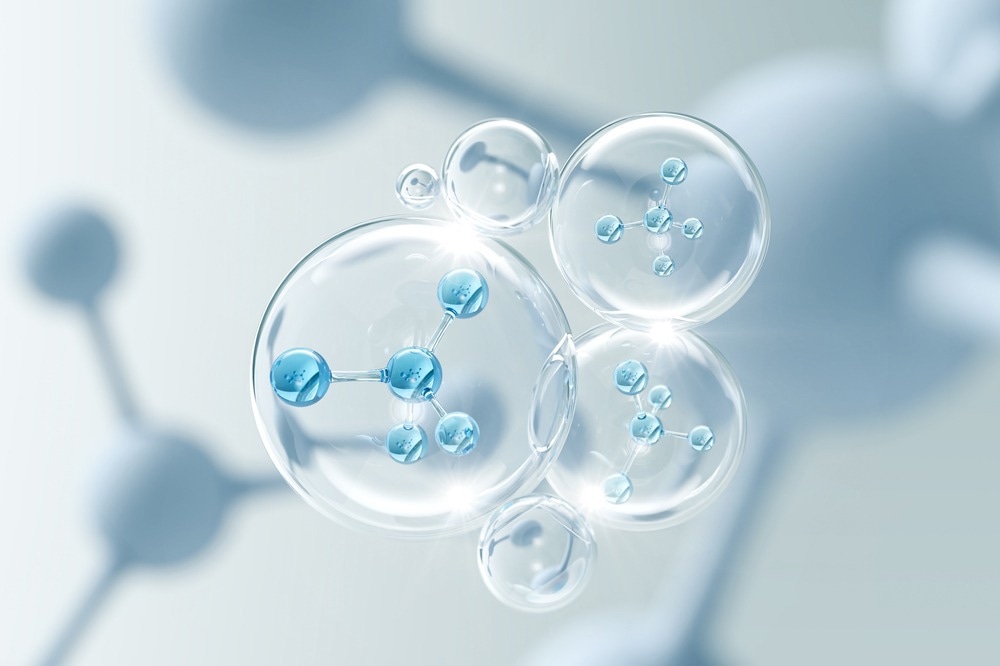It has been long thought that fullerene and its derivatives could naturally form in the universe. These are large carbon molecules shaped like a football, nanotube, or halved bowl. An international group of researchers, with the help of the Swiss SLS synchrotron light source at PSI, has demonstrated how this reaction functions.

Image Credit: Anusorn Nakdee/Shutterstock.com
The study outcomes have just been reported in the Nature Communications journal.
Both planets and humans are composed of dust from burnt-out supernovae and carbon compounds that are billions of years old. The universe is considered to be a huge reactor, and understanding such reactions means gaining insights into the origins and development of the universe—and where humans come from.
Previously, the development of fullerenes and their derivatives has been a mystery. Such carbon molecules, in the shape of a football, small tube, or bowl, were first made in the laboratory in the 1980s.
In 2010, the infrared space telescope Spitzer found the C60 molecules with the characteristic shape of a soccer ball, called buckyballs, in the planetary nebula Tc 1. Hence, they are known to be the biggest molecules to have been found until now that exist in the universe beyond the solar system.
However, the study questions their origin. A research group from Honolulu (USA), Miami (USA), and Tianjin (China) has now finished a significant reaction step in the development of the molecules. This has active support from PSI and the vacuum ultraviolet (VUV) beamline of the synchrotron light source Swiss SLS.
PSI offers unique experimental facilities and that’s why we decided to collaborate with Patrick Hemberger at PSI.
Ralf Kaiser, Professor, Department of Chemistry, University of Hawaii at Mānoa
A Mini Reactor for Fullerene
Patrick Hemberger, a scientist collaborating on the VUV beamline at PSI, has constructed a mini reactor for noting the development of fullerene in real time.
A corannulene radical (C20H9) is made in a reactor at a temperature of 1,000 °C. This molecule looks similar to a salad bowl, as though it had been dissected from a C60 buckyball. It reacts with vinyl acetylene (C4H4), which helps to deposit a layer of carbon onto the rim of the bowl.
“By repeating this process many times, the molecule would grow into the end cap of a nanotube. We have managed to demonstrate this phenomenon in computer simulations,” explained Alexander Mebel, Professor of Chemistry at Florida International University and one of the authors of the study.
We wanted to show that this type of reaction is physically possible.
Ralf Kaiser, Department of Chemistry, University of Hawaii at Mānoa
Various isomers have been produced by the reaction. Isomers are molecules that have the same mass but slightly varied structures. With the availability of standard mass spectrometry, all such variants produce a similar signal. However, the outcome is dissimilar while making use of photoelectron photoion coincidence spectroscopy, the method that has been adopted by the team.
“With this technique, the structure of the measurement curve allows conclusions to be drawn about each individual isomer,” explains Patrick Hemberger.
Solving the Puzzle of Classic Football-Shaped Molecules
The universe contains a wild jungle of molecules and chemical reactions – not all of them can be distinctly classified in the signals from telescopes.
Ralf Kaiser, Department of Chemistry, University of Hawaii at Mānoa
People are well aware of the fact that both vinylacetylene and corannulene exist in the universe. Currently, it has been possible to verify that such molecules develop the fullerene’s building blocks. “That’s why the experiment at PSI is so valuable for us.”
However, the successful publication made in the journal Nature Communications is not the end of the story. Scientists wish to perform more experiments to understand how the classic buckyballs are developed in the universe.
Journal Reference
Tuli, L. B., et al. (2023) Gas phase synthesis of the C40 nano bowl C40H10. Nature Communications. https://doi.org/10.1038/s41467-023-37058-y.